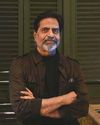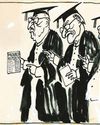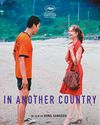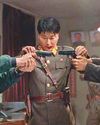
A group of devotees had gathered around a holy figure on a beach in south India. They started to recall the various names of the ocean found in Indian mythology. “Ratnakara” (Lord of Precious Stones) was one of them. The holy figure smiled and said: “The ocean should have some diamonds for us.” He then dipped his hand into the seawater and brought out a diamond necklace.
Sri Sathya Sai Baba (1926-2011) was this holy figure. Any account of his life will include episodes where he makes objects appear out of thin air. At an early age, he is said to have taken out fruits and flowers from an empty bag for his school friends. He also made pencils and other school items appear for his classmates who needed them. He made flowers appear for his family members all the time. Instances where he increased the quantities of food to make it suffice for a large group of his devotees are also very many.
Sai Baba used to make vibhuti (sacred ash), gold rings and necklaces appear in front of his devotees till late in his life. I doubt there is any other major spiritual figure in 20th century India with whom the performance of miracles is as tightly tied to their persona. By the early 1970s, Sai Baba was probably the most powerful spiritual guru in the country. His devotees in India and abroad numbered in lakhs. Around 1,500 organisations—all accountable to the Sri Sathya Sai Central Trust—are known to have existed around this time.
This story is from the August 01, 2024 edition of Outlook.
Start your 7-day Magzter GOLD free trial to access thousands of curated premium stories, and 9,000+ magazines and newspapers.
Already a subscriber ? Sign In
This story is from the August 01, 2024 edition of Outlook.
Start your 7-day Magzter GOLD free trial to access thousands of curated premium stories, and 9,000+ magazines and newspapers.
Already a subscriber? Sign In

No Singular Self
Sudarshan Shetty's work questions the singularity of identity

Mass Killing
Genocide or not, stop the massacre of Palestinians

Passing on the Gavel
The higher judiciary must locate its own charter in the Constitution. There should not be any ambiguity

India Reads Korea
Books, comics and webtoons by Korean writers and creators-Indian enthusiasts welcome them all

The K-kraze
A chronology of how the Korean cultural wave(s) managed to sweep global audiences

Tapping Everyday Intimacies
Korean filmmaker Hong Sang-soo departs from his outsized national cinema with low-budget, chatty dramedies

Tooth and Nail
The influence of Korean cinema on Bollywood aesthetics isn't matched by engagement with its deeper themes as scene after scene of seemingly vacuous violence testify, shorn of their original context

Beyond Enemy Lines
The recent crop of films on North-South Korea relations reflects a deep-seated yearning for the reunification of Korea

Ramyeon Mogole?
How the Korean aesthetic took over the Indian market and mindspace

Old Ties, Modern Dreams
K-culture in Tamil Nadu is a very serious pursuit for many